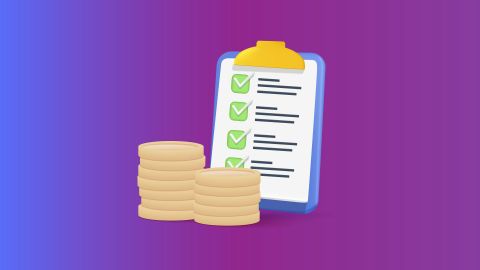Business transactions form the cornerstone of commerce, embodying the intricate exchanges that drive economic activities. Read on to explore more about the business transaction meaning, types, challenges, and solutions that define the jurisdiction of business transactions.
Business transactions
Business transactions encompass the various exchanges and interactions that occur within the commercial sphere. These dealings involve the transfer of goods, services, or monetary assets between parties, marking essential moments in the lifecycle of any business.
Types of business transactions
Business transactions are recorded based on their type and category. There are four main types:
- Sales transactions
- Purchase transactions
- Payment transactions
- Receipt transactions
1. Sales transactions
All businesses exist to sell goods or services. A sales transaction occurs when your business sells something to a buyer. This could be a physical product, something intangible (like software), or a service.
These exchanges can happen in three ways:
- Cash paid immediately (cash transactions)
- Cash paid later (credit transactions)\
- Exchange of goods or services (barter transactions)
Let us consider an example. Suppose a pastry company offers to sell a box of its delicious macarons to a hotel for Rs. 100 to give to its guests, and the hotel accepts the offer.
This creates a sales transaction for the pastry company because they are offering something of value (the macarons), and the hotel accepts by offering something of value (cash).
But what if the pastry company offers the macarons in exchange for a free one-night stay at the hotel? This is still a sales transaction because both parties have agreed on the terms and exchanged something of value.
2. Purchase transactions
In business, purchase transactions happen when a company buys goods or services. Like sales transactions, these purchases can be made with cash or something of value.
Let us go back to the pastry company example. When the company buys sugar to make the macarons, that is a purchase transaction, and it gets recorded in the company’s financial records.
Purchase transactions can also happen when the pastry company buys things like a laptop for recordkeeping, a van for local deliveries, or new baking equipment.
A business records a purchase transaction at the earlier of two events:
- Payment: when the business pays for the goods or services
- Receipt: when the business receives the goods or services
Here are some examples:
If the pastry company orders a laptop for Rs. 1,500 but has not paid for or received it, there is no purchase transaction, so the bakery does not need to record it.
But if the company orders the laptop and pays for it straight away with a credit card, then it has a purchase transaction to record. Similarly, if the pastry company orders the MacBook and receives it but has not paid yet, it will still record this as a purchase transaction.
Lastly, if the pastry company gives a dozen macarons to a professional photographer in exchange for product photos for the company’s website, that is also a purchase transaction.
3. Payment transactions
Unlike a purchase transaction, which may not always involve an immediate cash exchange, a payment transaction always includes a cash transfer. When a company pays for anything related to the business—whether it is salaries, utilities, office supplies, taxes, or inventory—a payment transaction takes place.
The key thing with a payment transaction is that there must be a transfer of cash.
4. Receipt transactions
A receipt transaction happens when a business receives money for any business-related reason. This could be payment for goods sold, services provided, assets sold, or even a tax refund—anything that results in an increase in cash.
A receipt transaction is different from a sales transaction, but they are connected. Remember, a sales transaction does not always involve an immediate cash payment. You have a sales transaction when you provide the goods or services, even if it is not paid for straight away.
In contrast, a receipt transaction means the business has received cash. So, when your customer pays you for that sales transaction, you will record it as a receipt transaction.
Examples of Business Transactions
Every day, a business carries out various transactions that impact its financial records. Here are some common examples:
- Borrowing money from a bank: When a business takes a loan from a bank, it is involved in a transaction with the bank. The loan will affect the company’s assets and liabilities
- Purchasing goods from a supplier: When a business buys goods from a supplier, this transaction is between the company and the supplier. The purchase will be recorded in the company’s accounts for purchases and the supplier. It will also need to be added to the company’s inventory
- Paying rent and utility bills: When a business pays for rent, electricity, water, or internet, it is carrying out business transactions. These payments are recorded in the company’s expense and asset accounts
- Selling goods: When a company sells goods, it enters into a transaction with the buyer. The sale is recorded in the business’s asset and income accounts. Sales agreements are usually used to document the transaction
- Paying interest: When a business pays interest, it is another type of transaction. This will be reflected in both the company’s assets and expense accounts
Features of a Business Transaction
To be considered a business transaction, the exchange must have the following key features:
- The transaction must have financial value
- There must be 2 parties involved in the transaction
- The transaction should be for the business entity, not for an individual’s personal use
- The transaction should be backed by a supporting document (such as an invoice, sale order, receipt, etc.)
- If the transaction cannot be recorded in the business’s accounts, it is likely not a business transaction.
Business transactions must affect the financial position of the business. This can happen in 2 ways: through a quantitative change or a qualitative change.
- Quantitative change: This happens when the value of the business’s assets or liabilities changes. For example, if a fire destroys machinery worth ₹7,50,000, the company’s assets are reduced. This is still a business transaction because the loss can be recorded in the accounts.
- Qualitative change: This occurs when different elements of assets or liabilities change. For example, if the company replaces the machinery lost in the fire, it may spend ₹7,50,000 to buy a new one. While the company loses ₹7,50,000 in cash, it gains machinery worth ₹7,50,000. The total value of assets stays the same, but the company’s financial position has changed, so this is still a business transaction.
Steps of a Business Transaction Analysis
When a business transaction occurs, it needs to be properly recorded and analysed in the company’s accounts. This is an essential process for keeping track of the business’s financial position. There are 5 main steps in the accounting cycle, which help ensure that the financial records are accurate and up to date.
Step 1: Analyse and record the transactions
The first step is to carefully analyse each business transaction as it happens. This means understanding what the transaction involves, such as whether it is a sale, purchase, or payment, and then recording the details accurately in the accounts. Every transaction has 2 parts: a debit and a credit, which are used to balance the accounting records.
Step 2: Enter the transactions in the general ledger
Once the transactions are recorded, they need to be entered into the general ledger. The ledger is a record book where all the financial data is organised. Each transaction is entered as a debit or credit under the appropriate account, such as cash, sales, or expenses. This step helps keep track of all financial activity in the business.
Step 3: Adjust the assets with a trial balance
The third step involves checking if the accounts balance correctly by preparing a trial balance. This step ensures that the total of the debits matches the total of the credits. If the trial balance does not match, adjustments are made to correct any errors before moving forward.
Step 4: Prepare financial statements
Once the accounts are balanced, the next step is to prepare the financial statements. These include the balance sheet, income statement, and cash flow statement, which provide a clear picture of the business’s financial health. These statements help the business owner and other stakeholders understand how the business is performing.
Step 5: Close temporary accounts
Finally, temporary accounts, such as income and expenses, are closed at the end of the accounting period. This means the balances in these accounts are reset to zero, so they can be used for the next period. This step is important for starting fresh in the next accounting cycle.
Maintaining accurate financial records is vital for any business. If your company struggles with analysing and recording business transactions, it may be helpful to consult a professional, such as a business lawyer or a certified accountant (CPA), to ensure everything is done correctly.
Importance of business transactions
Understanding business transactions is more than just knowing their definitions and categories. They are crucial for several important parts of a company’s operations:
- Financial reporting: Recording transactions correctly is essential for preparing financial statements that show the company’s financial performance. These statements are important for investors, lenders, and other stakeholders who use them to make decisions.
- Tax compliance: Businesses must pay taxes based on their income and expenses. Keeping accurate records of transactions helps businesses meet their tax obligations on time.
- Internal controls: Business transactions are important for setting up internal controls, which are processes designed to protect assets, prevent fraud, and ensure financial information is accurate.
Importance of smooth transactions
The fluidity of business transactions is paramount for sustained success. A seamless process ensures timely exchanges, fosters trust, and fortifies relationships with customers, suppliers, and stakeholders. It enhances operational efficiency, contributing to a positive business reputation and increased customer loyalty.
Common challenges in business transactions
Despite their significance, business transactions are not without challenges. Issues like delayed payments, disputes, or inaccuracies in documentation can disrupt the harmony of exchanges. Mitigating these challenges requires proactive measures, emphasizing the need for robust transaction management.
How to streamline business transactions
To streamline business transactions, organisations can adopt strategies such as:
- Clear communication
Ensuring all parties have a comprehensive understanding of terms and conditions.
- Automation
Employing technology to automate repetitive tasks, reducing errors and enhancing efficiency.
- Standardised processes
Implementing standardized procedures for consistency and clarity.
- Regular audits
Conducting regular audits to identify and rectify potential issues.
Embracing these practices can transform the transactional landscape, fostering a smoother and more reliable business environment.
Role of technology in business transactions
Technology plays a pivotal role in revolutionising business transactions. From online payment systems to blockchain, innovative solutions enhance security, speed, and accuracy. Embracing these technological advancements not only mitigates challenges but also propels businesses into a more dynamic and future-ready state.
Business transactions form the backbone of commerce, embodying the essence of exchanges that drive economic activities. Understanding their types, addressing challenges, and adopting streamlined practices are imperative for businesses aiming to thrive in today's dynamic landscape.
When thinking about your business needs, consider how Bajaj Finserv Business Loan can help. With flexible financing, competitive rates, and an easy application, it provides the support to move your business forward smoothly.




